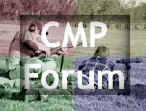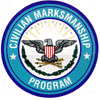

| We want your feedback! Please let us know what you think about TFS. Do you have an interesting story or article that you would like to share? If so, please let us know!
|
Reader Comments:
CMP Shooters' News is one of my favorite email news publications. Information packed, talented authors, timely subjects, and all around well done. What a great service you are providing to the shooting community. Just wanted to say thanks and Merry Christmas.
Newt E.
I enjoy and look forward to TFS and the excellent articles that are published on a regular basis.
Please keep this publication coming and keep the CMP active.
Don M.
One of the members at Snipers Hide pointed out the newsletter and the High Power Tips articles by the USAMU team.
Darn you! I was up until 1:00 AM last night reading all of the articles. Great newsletter and really great USAMU articles.
Thanks,
Michael E.
Great article written on physical conditioning in the latest TFS. I was one of likely many who had asked about the type of conditioning recommended for serious shooters. Sgt. Craig did a great job on describing the routines. Now it’s my turn to put it to work.
Thanks to you, Sgt. Craig and other contributors who share best practices of shooting excellence.
Sincerely,
Keith H.
I use these articles in our high power clinics and have found them very helpful for both new shooters and reinforcement of the basics for the more experienced.
Thanks, Gary M.
Thanks for the great articles on the Carbine, Springfield, Garand matches. All the articles are interesting, but the Carbine, Springfield & Garand are my favorites.
Jim H.
The September-07 on line shooting tips by SSG Tobie Tomlinson, USAMU Service Rifle Team Member, is a great article. I have reproduced 15 copies of it to hand out and discuss to our “newbie” first year air rifle shooters on our high school JROTC Air Rifle Team. Come to think about it believe I’ll hand out a copy to my advance shooters as well. His explanations are simple to understand but rich in detail. Coupled with the sight pictures this article will go a long way towards helping all our JROTC shooters obtain better sight patterns. Keep up the great work. AND…..keep the articles like this coming.
Malcolm V.
CW2 (R), US Army
It seemed good to read the article on Infantry Trophy Match. As a shooter on the Marine Corp Team way back in 1967 I participated in the Match. We were the second team for the Marines but placed second overall. One of our shooters forgot to put the windage on his rifle. I enjoyed shooting the M-1 and M-14 at Camp Perry and always wanted to go back but never seemed to find the time. The top over all shooter at that time was my team mate Lt. Bowen. I remember some of the team members carrying him from the 600 yd line back to the rest of us. It was a great time in my life and will never forget it. Thanks again for the article.
Mike A.
Thanks for the great series of articles from the USAMU – they are very readable, and usable!
Tom, AZ
Great articles. Great to identify those who are participating as well as those who are working behind the scenes to make the whole of the National Matches run so well.
David D.
Boxford, MA
This is a special note just for my friends at the CMP, I want to thank you all for your hard work and attention to details, it's a great program!
"You help our shooting dreams come true!"
Best Regards,
Tony M.
|
|
|
 |

Strapping In
By SPC Calvin Roberts
|
|
There are countless ways to set up a highpower rifle sling. However, there is no one way to properly assemble this crucial shooting tool. This article is not intended to walk you step by step through the ďproper sling assembly processĒ. I am simply going to provide several tips and tricks to try out and keep in mind for your next trip to the range. The best way to learn the proper sling configuration is to talk with several experienced competitors and have them show you how they attach and use their sling. Then experiment with what you have seen to find out what works best for you.
First things first, to truly understand why you need a rifle sling, you have to understand its purpose. When properly implemented, a sling will improve stability in a shooters firing position by increasing support for the sitting or kneeling and prone positions. This will, in return, increase a shooters confidence, leading to better and more consistent performances.
|

|
|
In the standing position, it is best to keep the sling tight and on the outside of the rifle.
|
I mentioned the slings use for prone and sitting, but what do I do with my sling for the standing position? This is a common question among highpower rifle competitors, new and old alike. What I like to do is keep my sling tight and on the left side of my rifle. This keeps the sling from bunching up between the rifle and my shooting coat, which would force me to cant the rifle outward. Itís fairly common to see competitors on the firing line who have their sling hanging loose or set up for sitting with a lot of slack in it. I highly recommend you do not do this because when the wind begins to blow it will catch the sling, causing more movement than you will already have.
A very good habit to get into is recording your sling settings in your data book. Most slings have numbered notches, which makes remembering your settings easier. However, itís a good idea to mark them with a paint pen or marker. There are several reasons for this, the first one being that as you use your sling, it is naturally going to stretch. This strategy will help you to keep your positions consistent as your sling breaks in. Another reason is because it is common to use a different setting from sitting to prone. I loosen my sling up one notch from the sitting to prone, depending on what range Iím at. Remember, every range is different, donít be afraid to take up a notch or loosen one if the targets at a particular range are higher or lower than you are used to.
|
 |
I canít think of a single rifle match I have competed in where I didnít hear another competitor complaining about how their pulse beat affected one of their rapid fire groups. There are several ways to reduce pulse. However, you must learn to shoot through some degree of pulse. One of my favorite tricks for sitting and prone is to tuck the end of my sweatshirt sleeve into my shooting glove. If you take notice while in one of these positions, the sling crosses your wrist tightly, which is one of the two places it touches your body. Much of the pulse you see while shooting comes from here, this will also be more comfortable due to the extra padding between the sling and your body. Another thing to try if you still experience a large amount of pulse, is to adjust the slings position on your non firing arm (the second place the sling comes in contact with the body). In order to figure out what is most comfortable for you; spend some time experimenting. You donít necessarily have to go to the range to work on this. Itís not uncommon for me to put all my gear on in my living room and try a few things, or have someone else take a look at my position if Iím having problems. Keep in mind that your sling should be up high on your non firing arm above your tricep, and rotated outward away from your body.
Maintaining your rifle sling is very important. If something happens to your sling in the middle of a match, your day is over. Thatís why itís a good idea to keep an extra sling that you are familiar with in your shooting stool in case you have some kind of sling drama. A good habit to get into is inspecting your sling before you even walk down range. A few things you want to look for are cracks in the leather, usually near the area where the sling attaches to the swivels on the rifle. You also should check the stitching on the keepers for dry rot. Your sling WILL be exposed to rain, snow, heat, humidity, and sunlight. Every few months I apply a leather conditioner to help my sling survive these elements and last for several seasons. If you find any problems with your sling itís probably time to go shopping.
Whether you are planning on being a die-hard highpower rifle competitor, or just a weekend warrior looking for a hobby to get you outdoors, knowing how to properly utilize a rifle sling will improve your scores and consistency. Also, donít be afraid to ask other shooters for help or tips. The shooting community is a friendly group and most competitors are more than happy to share their knowledge and get new shooters heading in the right direction.
|
The USAMU Service Rifle Team is also answering your
questions pertaining to Service Rifle Shooting including topics such as
Equipment and Ammunition, Shooting Positions and Shooting Techniques and
Tactics. Go to
http://www.odcmp.com/Competitions/USAMU/ShootingTips.htm
to view the latest questions and answers. If you have a question you
would like to ask, email USAMU@odcmp.com. |
NEXT ARTICLE |
|
|


